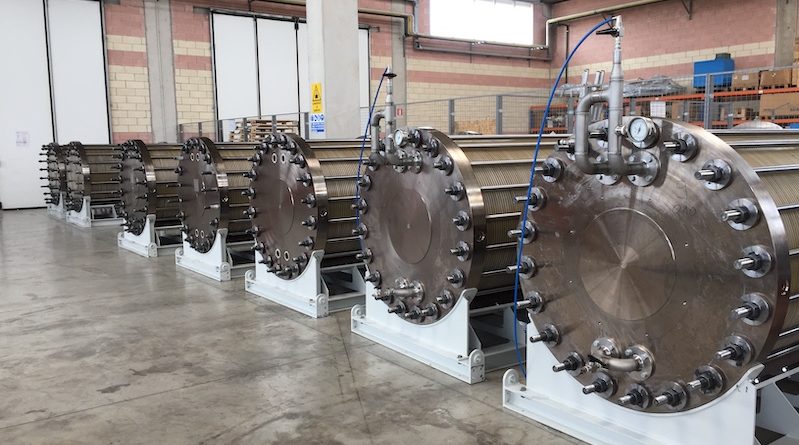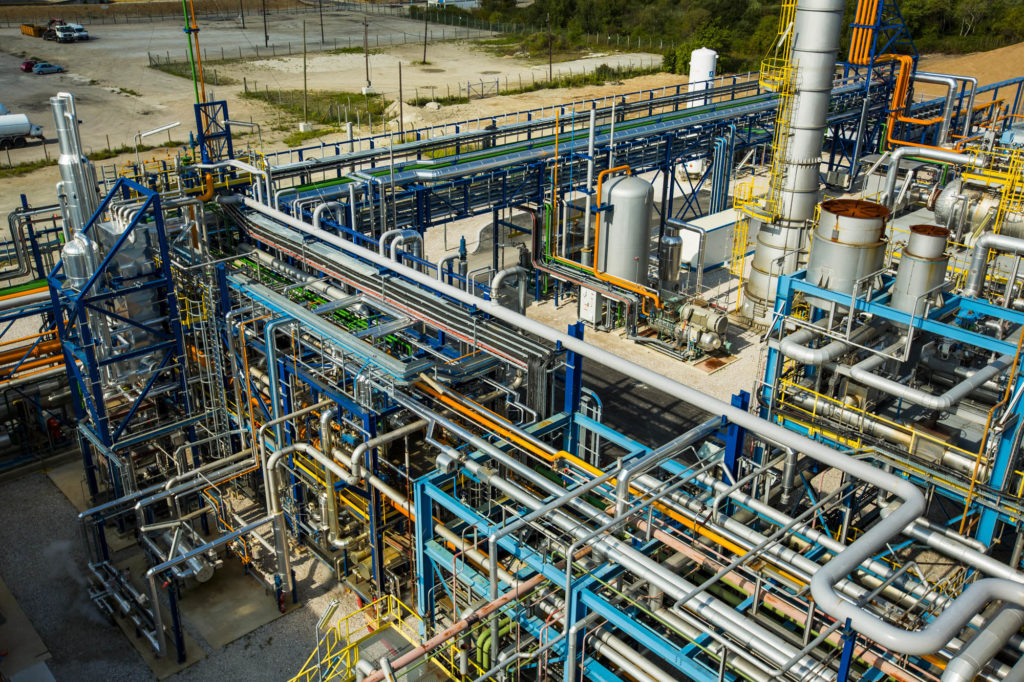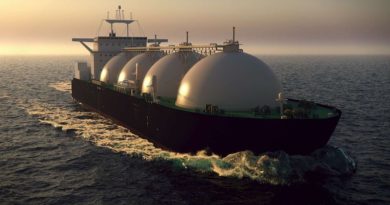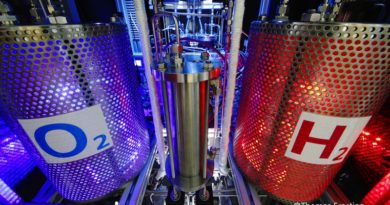
How France can be a key pillar of REPower EU’s Hydrogen Accelerator
The current energy crisis, intensified by the Russo-Ukrainian War, has demonstrated to Europeans the urgent need to move away from fossil fuels. The increasingly frequent repetition of violent climatic episodes is raising awareness of the reality of climate change and increasing the need to find operational solutions to reduce our GHG emissions.
Among them, clean hydrogen currently appears to be part of the solution for at least three main reasons: firstly, the cost of renewable energies has fallen considerably over the past decade, with the cost of solar energy, for example, having been divided by 10 in 10 years. Furthermore, the cost of hydrogen technologies has also dropped considerably: these technologies, which a few decades ago were reserved for the conquest of space or for defense, are now easily accessible. Finally, hydrogen is a means to store massive quantities of renewable energy on an inter-seasonal basis.
Electricity, which currently accounts for 20 to 25% of final energy consumption, will take on a larger share in the future. Most forecasting models give it a share of 50 to 60% by 2050.
This electricity will be produced by low-carbon and renewable generation technologies, particularly solar and wind, and large quantities of electricity will have to be stored between summer and winter to ensure needs throughout the year. Hydrogen currently appears to be the only means of storing these large quantities.
Worldwide, more than 40 countries are now committed to implementing a hydrogen strategy or a roadmap. France is at the forefront, along with Germany, Japan, South Korea and China. The French Hydrogen Strategy is based on 3 pillars:
- Decarbonise industry by relying on large quantities of renewable or low-carbon hydrogen needed to develop a competitive French electrolysis industry and reach an electrolysis capacity of 6,5 GW by 2030.
- Decarbonise professional mobility, i.e. heavy-duty transports (buses, coaches, lorries, refuse collection vehicles, trains, boats, aircraft) or intensive mobility (last mile logistics, taxis).
- Maintain a high level of excellence for French R&D&I in hydrogen technologies and develop skills and training for the sector.
This strategy has been given a budget of 7.2 billion euros and a governance, with the National Hydrogen Council chaired by the ministers of the economy and ecology and co-chaired by the chairmen of Air Liquide and Faurecia. 1.9 billion euros were added to the initial budget, as part of the new France 2030 plan presented by President Emmanuel Macron on 12 October 2021 for the development of the French hydrogen sector until 2030.

To clarify this vision, France Hydrogène conducted a study in 2021 on the deployment of renewable or low-carbon hydrogen in France by 2030. Given the current and potential hydrogen demand as well as the announced projects, it appears very likely that hydrogen will develop within seven main hydrogen valleys: the ports (Dunkirk, Nantes Saint-Nazaire, Fos-Marseille), the valleys (the river Seine from Le Havre to Charles de Gaulle airport, the Rhone valley) as well as the transborder areas with Spain (Lacq basin) and with Germany. These major consumption areas will concentrate nearly 85% of hydrogen demand by 2030. The rest of the territory will mainly be covered with the deployment of hydrogen refueling stations along the main motorways and in urban nodes (TEN-T).
According to our reference scenario, the objective of 6,5 GW of electrolysis could be reached by 2030 for the domestic production of 680,000 tons of renewable or low-carbon hydrogen with 37 TWh of electricity needed.
However, given the new requirements from the Fit-for-55 Package, France Hydrogène has also modelized a more ambitious “Ambition 2030 +” scenario in which 1,09 million tons and 10 GW of electrolysis capacity are reached (60 TWh of electricity needed). Within the valleys, France Hydrogène expects first pipelines of hydrogen, mainly retrofitted from gas pipelines, to be deployed before progressively interconnecting valleys with each other.
This dynamic expected in France will take place in the European context and will contribute to the REPower EU objectives of consuming 20 million tons of clean hydrogen by 2030, to move away from Russian fossil fuels as quickly as possible. Half of it is expected to be produced domestically in the EU, while the other half would be imported from neighboring third countries. The European Commission proposes to raise the targets for renewable hydrogen from 50 to 75% in the industry and from 2.6 to 5% in the transport sector (RED III), as well as to double the number of hydrogen valleys by 2025.
To import the required quantities, efforts should be made to develop first networks of hydrogen pipelines and storage infrastructures across the EU, as well as import terminals, especially along the three main import corridors expected along the North Sea (Great Britain, Norway), North Africa (Morocco, Egypt) and Ukraine.

Regarding these objectives, the French hydrogen sector must tackle four challenges in this European context:
- Reduce costs. Hydrogen technologies are mature, as the numerous demonstrators developed so far have largely shown. However, their cost remains very high given their low deployment. The sector must now scale-up in order to reduce costs. This goal can be achieved by developing large-scale territorial ecosystems that will bring together users from industry, mobility and even energy. The scale-up should follow a factor 1000. In France, at present, barely 400 vehicles run on hydrogen. With our “Ambition +” scenario, France Hydrogène aims for 450,000 vehicles by 2030. For electrolysis, barely 5 MW are currently in place in France, while the objective is between 6.5 GW and 10 GW by 2030.
- Promote technological neutrality. The EU hydrogen strategy promotes electrolysis as the preferred means of producing renewable hydrogen. However the production of 10 million tons of clean hydrogen targeted by REPower EU requires 550 TWh of electricity and hundreds of GW of new dedicated renewable capacities (+300 GW with solar only or +135 GW with offshore wind only). Such huge quantities require a drastic increase of the pace of deployment of renewable energies. With a risk of a lack of additional renewable electricity, low-carbon electrolytic hydrogen can contribute as a complement to the ramp-up of the electrolysis market, to help matching the EU demand for clean hydrogen, and to decarbonise hard-to-abate sectors (industry, heavy-duty transport). The EU should also acknowledge the role of fossil-free hydrogen from nuclear electricity, producing low-carbon hydrogen below the legal or EU Taxonomy thresholds (3.38 kgCO2eq/kgH2). EU support policies such as incentive targets should be extended to low-carbon hydrogen, particularly to meet the increased REPower EU targets for clean hydrogen in the industry (75%) and the transport sector (5%) by 2030. While acknowledging the fact that electrolysis is the most mature technology, other technologies also allow the production of renewable or low-carbon hydrogen, in particular the continued production of hydrogen by steam reforming of natural gas, provided that this process is equipped with a carbon dioxide capture and use or sequestration unit (CCUS). Production of hydrogen from biomass as well as plasmalysis processes (by microwave or by plasma torch) should also be developed.
- Contribute to the reindustrialisation of the French economy. The deployment of hydrogen technologies must be a lever for the reindustrialization of the French economy and be supported by EU industrial cooperation. This is the purpose of the gigafactories projects that have been notified to the European Commission within the framework of the Important Project of Common European Interest (IPCEI) for electrolysers (McPhy, John Cockerill, Elogen and Genvia), fuel cells (Symbio) and key components (Faurecia, Plastic Omnium, Hyvia and Arkema). Green lights are expected by this summer to unlock investment decisions all over Europe.
- Build up infrastructures to transport and store hydrogen. France’s particular geographical position between countries richly endowed with renewable energy and capable of massively producing competitive renewable hydrogen (Spain, Portugal, North Africa) and countries in the northwestern part of Europe with a high level of demand for low-carbon or renewable hydrogen (Germany, the Netherlands) can give it the status of a transit country for hydrogen. The deployment of hydrogen infrastructures in France would offer access to clean hydrogen at an advantageous cost to French consumers. It is premature to establish a timetable for the development of these interconnections between French valleys and neighboring countries (Spain, Germany, the Netherlands). This development will be based on customer demand and it is in this sense that French TSO’s GRTgaz and TEREGA have launched a national market consultation and have started identifying offer and demand. But it is important to stress that the deployment of infrastructures such as hydrogen pipelines or storage sites is a long-term process. As it takes at least 5 years to implement such investment decisions, it is important to continue the reflection to be ready to respond to market demands and thus offer French consumers a quality and economically acceptable hydrogen supply over the long term.
Given the issues at stake and the scale of the challenges to be met, the key word for the coming years will be cooperation. Cooperation between States and the private sector, between regions and companies, between industrials and research centers, between multinational groups and SME/start-ups. And in terms of geopolitics, a concerted hydrogen diplomacy will have to emerge. This is the only way to achieve the ambitious objectives set out by the EU Hydrogen Strategy, thus enabling an effective fight against climate change and strengthening our strategic autonomy.




